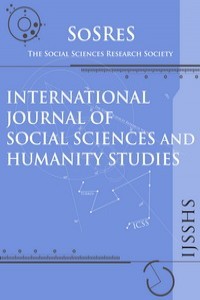WE ARE NOT OURSELVES - FEMALE CHARACTERS IN BHARATI MUKHERJEE’S NOVELS
WE ARE NOT OURSELVES - FEMALE CHARACTERS IN BHARATI MUKHERJEE’S NOVELS
Louis A. Sass, borrowing from Shlovsky’s defamiliarization discusses certain patients, affected by specific mental disturbances, as “taking a very distant or else fragmentary microscopic view of an object, avoiding standard causal/narrative schemas of meaning and describing an object in terms of its mere existence or geometrical form (that is, by avoiding use of its name and suppressing all references to its usual functional role in human life)”. With the above quotation suggestive for the theoretical framework employed, the present study aims at discussing the Indian-American writer, Bharati Mukherjee’s three works- the novel “Wife” and “Jasmine”, the story and the novel- from a Gothic perspective, focusing on the psychology of the characters, in order to argue for madness and monstrosity as both subversive survival strategies and/or escapes from narrow patriarchal, political, social and cultural confines
Keywords:
Gothic, madness, patriarchy, strategy womanhood,
___
- Aneja, Anu (1993), “Jasmine,” the Sweet Scent of Exile”, Pacific Coast
- Philology, Vol. 28 No.1, pp. 72-80, published by Pacific Ancient and Modern Language Association, http://www.jstor.org/stable/1316424 [accessed 04.2011]
- Bhabha, Homi (2005), “Race, Time and the Revision of Modernity”, (in: C. McCarthy, W. Crichlow, G. Dimitriadis &N. Dolby-Eds., Race, Identity and Representation in Education, New York: Routledge, pp. 13-26
- Benjamin, Jessica (1998), Shadow of the Other: Intersubjectivity and Gender in
- Psychoanalysis, London/New York: Routledge, 1998
- Brewster, Scott (2001), “Seeing Things: Gothic and the Madness of
- Interpretation”, (in: David Punter-Ed., A Companion to the Gothic), MA, U.S.A: Blackwell Publishing, pp.281-293
- Brooks, Peter (1987), “The Idea of a Psychoanalytic Literary Criticism”, (in: Schlomith Rimon-Kennan-Ed., Discourse in Psychoanalysis and Literature),
- London and New York: Routledge, pp. 14-28
- Carter-Sanborn, Kristin (1994), “We Murder Who We Were”: Jasmine and the Violence of Identity, American Literature, Vol. 66, No.3, pp.573-593, published by Duke University Press, http://www.jstor.org/stable/2927605, [accessed 03.2011]
- Connell, Michael, Jessie Grearson and Tom Grimes (1990), “An Interview with
- Bharati Mukherjee”, (in: Iowa Review 20.no.3), pp. 26-27
- De Lamotte, Eugenia C. (1989), Perils of the Night: A Feminist Study of
- Nineteenth-Century Gothic, Oxford: Oxford University Press Deleuze, Giles and Felix Guattari (1988), A Thousand Plateaus, Trans. Brian
- Massumi, London: Athlone Press Deleuze, Giles and Claire Parent (1987), Dialogues II., Trans. Hugh Tomlinson and Barbara Habberjam. London: Continuum
- Grewal, Gurleen (1993), “Born-Again American: The Immigrant Consciousness in Bharati Mukherjee’s Jasmine”, (in: Emmanuel S. Nelson-Ed., Bharati Mukherjee. Critical Perspectives), New York: Garland, pp. 181-86
- Gurr, Andrew (1981), Writers in Exile: The Identity of Home in Modern
- Literature, Brighton: Harvester Press Ma, Shang-Mei (1998), Immigrant Subjectivities in Asian American and Asian
- Diaspora Literatures, New York: State Univ. of New York Press, 1998
- Moers, Ellen (1977), Literary Women: The Great Writers, New York: Doubleday
- Mukherjee, Bharati, Mukherjee’s Work: Jasmine, BBC World Service http://www.bbc.co.uk/worldservice/arts/features/womenwriters/mukherjee_work.s html, [accessed 25.04.2011]
- Mukherjee, Bharati (1988), “Immigrant Writing: Give Us Your Maximalists”,
- New York Times Book Review Mukherjee, Bharati (1991), Jasmine, Canada: Ballantine
- Mukherjee, Bharati (1988), The Middleman and Other Stories, New York: Ballantine
- Mukherjee, Bharati (1987), Wife, Hammondsworth: Penguin
- Newman, Judie (1995), “The Madwoman in the Motel: Bharati Mukherjee,
- ‘Jasmine and Jasmine”, (in: The Ballistic Bard: Postcolonial Fictions), London: Arnold, pp. 144-72
- Ng, Andrew Hook Soon (2007), Interrogating Interstices; Gothic Aesthetics in
- Postcolonial Asian and Asian American Literature, Bern: Peter Lang Punter, David (1996), The Literature of Terror, Vol.2: The Modern Gothic: 2nd edn., London: Longman
- Ray, Sangeeta (1998), “The Nation in Performance: Bhabha, Mukherjee and Kureishi”, (in: Monika Fludernik-Ed., Hybridity and Postcolonialism: Twentieth Century Indian Literature), Stauffenburg, Germany: Springer, pp. 219-38
- Reiss, Timothy J. (1995), “Mapping Identities: Literature, Nationalism,
- Colonialism”, (in: Andrew Parker & al-Ed., Debating World Literature), London/New York: Routledge, pp. 110-47
- Rushdie, Salman (1991), Imaginary Homelands: Essays and Criticism 1981-1991, London: Granta
- Warhol-Down, Robyn (2008), “Jasmine Reconsidered: Narrative Discourse and Multicultural Subjectivity”, (in: Contemporary Women’s Writing 2:1June doi:I0.1093/cww/vpn007, published by Oxford University Press), (Accessed from cww.oxfordjournals.org at Yeditepe University on March 31, 2011)
- Başlangıç: 2009
- Yayıncı: Sosyal Bilimler Araştırmaları Derneği
Sayıdaki Diğer Makaleler
MODELING MONETARY POLICY RULES IN THE MENA COUNTRIES: ISSUES AND EVIDENCE
UNDERGRADUATE STUDENT’S SATISFACTION TOWARD THE NEW EDUCATION SYSTEM IN THAILAND
THE BARRIER TO SOCIAL DYNAMICS IN TURKEY: AUTHORITARIAN MENTALITY AND STATISM
Nadir ATEŞOĞLU, Öztürk AKÇAOĞLU
David Ferreira Lopes Santos, Santiago Valcacer Rodrigues
EUROPEAN SOCIETIES AND EMERGING TECHNOLOGIES - DEBATE ON NANOTECHNOLOGY IN POLISH AND SWEDISH PRESS
A SOCIOLOGICAL EVALUATION OF HOME-BASED WORKING AND WOMAN LABOUR
THE NEED FOR CHARACTER EDUCATION
INNOVATIONS AND CHANGES BROUGHT BY THE LISBON TREATY: THE SOCIAL ASPECT
